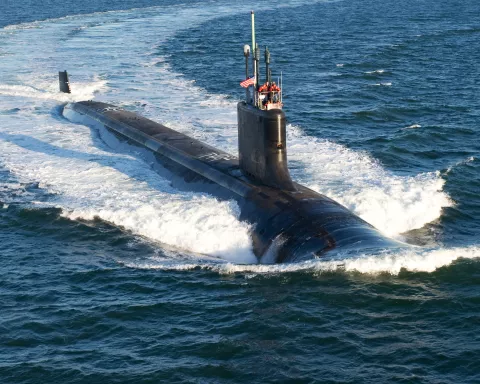In today’s rapidly evolving world, career literacy has become an essential educational objective in K-12 classrooms. It involves helping students understand a range of career opportunities, the skills required for each, and the educational routes that lead to them. Integrating career exploration into academic subjects enhances learning by making it more relevant. As the U.S. Navy continues its mission to develop and sustain cutting-edge submarines and ships, early exposure to maritime manufacturing careers can equip students with the knowledge and skills to contribute to this vital industry and, by extension, to national defense.
The Importance of Career Literacy

Career literacy equips students with the ability to make informed decisions about their future, helping them recognize the value of their education beyond the classroom. It connects academic learning with real-world applications, particularly in industries like maritime, where roles ranging from engineering to skilled trades are vital in vessel construction.
Maritime manufacturing offers diverse career paths, from naval architecture requiring advanced degrees to skilled trades like welding and electrical work needing certifications through training programs. Understanding these pathways helps students make informed decisions based on their interests and skills.
By integrating career exploration into K-12 curricula, students gain exposure to the wide array of opportunities available. For instance, a project-based learning activity that asks students to apply principles of physics and mathematics to design a model submarine reinforces their academic knowledge but also introduces them to key skills needed in maritime manufacturing.
Integrating Career Exploration Across Disciplines
- STEM Education: Science, technology, engineering, and mathematics (STEM) subjects are fundamental to careers in the maritime industry. Educators can enhance career literacy by highlighting how multiple subjects apply to the same real-world scenario. For instance, using submarine design and construction, the contents of chemistry, physics, and geometry can be combined for a lesson on metals, buoyancy, and the design of submersible hulls.
- Arts and Humanities: Career exploration doesn’t have to be limited to STEM. The arts and humanities can also play a significant role in maritime career literacy. Students can engage in creative projects that involve designing promotional materials for a fictional shipbuilding company or writing persuasive essays about the importance of manufacturing in their local community. Such activities foster critical thinking and creativity, skills that are valuable in any career.
- Career Days and Guest Speakers: Schools can enhance career literacy by organizing career days or inviting guest speakers from the maritime industry. Professionals from various fields—such as engineering, naval architecture, computer science and skilled trades like welding, machining, and quality assurance—can share their experiences and provide insights into the skills and education required for their careers. This exposure can inspire students and help them envision themselves in these roles.
- Field Trips and Internships: Experiential learning opportunities, such as field trips, job shadowing, or internships with local industries can deepen students’ understanding of maritime manufacturing careers. These experiences allow students to see the practical applications of their studies and meet professionals who can guide them in their career journeys.
Utilizing the Educational Resources on BuildSubmarines.com

The U.S. Navy relies on a skilled workforce from across the country to build and maintain its fleet. By integrating career exploration into K-12 education, teachers can play a pivotal role in helping students understand the essential contributions they could make to this mission. To support this effort, we encourage you to explore the educational resources available for educators, administrators, parents, and others at BuildSubmarines.com.
- Support Inquiry: On the Educational Resources page, you’ll find numerous hands-on, project-based learning activities that introduce students to maritime industry careers. You can also fill out a form to request assistance with these activities or to connect with maritime industry leaders in your area for career days or field trips.
- Links to Partner Organizations: The Maritime Industrial Base collaborates with partners across the U.S. that provide exceptional learning opportunities for students of all ages and skill levels. Through BuildSubmarines.com, you can explore resources and opportunities from these leading organizations.
- Encourage Career Exploration: Educators can direct students to the Opportunities page on BuildSubmarines.com to explore maritime careers. Students can search by location, learn about available positions, and find out what academic and technical skills are required for those roles.
Embedding career literacy into K-12 classrooms is essential for preparing students for future careers, particularly in maritime manufacturing. By integrating career exploration across various subjects, educators can help students see the connection between their education and the real-world. As we prepare the next generation for the workforce, fostering career literacy is an investment in both individual futures and the broader community.
For more information on careers in the maritime industry and to access educational resources, please visit BuildSubmarines.com.
Are you an affiliate?



